He’s smart. He’s also fun. And curious.
He likes to hang out with people – he often waves at them and nods his head.
He is quick and agile. And he has a beard.
It might surprise you that I’m not portraying a charming human being.
I am describing one particular lizard.
Bearded dragons are one of the most popular pet lizards in the world. The famous beardie has transformed the perception of reptile ownership, changing it from something highly specialized to something as common as keeping a hamster.
Bearded dragons owe their popularity to the following facts: they are fun to watch, a breeze to handle and quite easy to maintain.
However, they do have some specific requirements. Did you know that:
- You need to balance your beardie’s diet to include both plants and vegetables – but you can’t feed them just anything;
- Beardies have special requirements regarding temperature, humidity, and lighting;
- Although beardies are easy going and docile, there are certain techniques on how to handle them and tame them.
With this series of bearded dragon articles, I hope to provide you with quality information and tried-and-tested advice to help your beardie thrive.
If you are eager to learn more about the fabulous beardie’s origins, habits, needs, and health, please read on.
Let’s dive together into the fast, temperamental, cuddly, appetite-rich and all-in-all adorable world of bearded dragons!
Bearded Dragon Facts
- Bearded dragons originate from dry bushland and desert regions of Australia.
- Their scientific name is Pogona vitticeps, and they belong to the family of Agamidae – along with thorny devils, water dragons, and other cool frog-headed lizards.
- They get their common name from the spiky growths under their necks, which will puff up and turn black when the lizard is excited, resembling a human beard
- Bearded dragons are omnivorous – meaning they eat both plant and animal matter.
- They communicate via body language such as head bobbing, arm waving, or changing color.
- Bearded dragons are so sweet that enthusiasts call them ‘beardies’. I do too!
- All bearded dragons on the international market are captive bred.
- A lifespan of a captive beardie is around 10 years.
- The bearded dragon is one of the most docile pet lizards. Which, of course, doesn’t mean they can’t get upset sometimes.
Bearded Dragon Anatomy
Bearded dragons have an anatomy typical for a medium-sized, diurnal, ground-dwelling lizard predator. They have a rounded body which can also slightly flattened and covered with spines of different sizes. Additionally, the skin can change color – when their body turns black, it allows them to soak in more heat from the sunlight.
Legs are strong and stubby, covered with dense and rough spines, and with five clawed toes on each foot.
The tail is of moderate size; it is thick at the base and then narrows down towards the tip. A plump tail is a sign of good general condition, as the lizard will store fat reserves within the thicker region of his tail. Beardies do not have the ability to shed their tails.
Bearded Dragon’s Head Anatomy
Beardie’s head is triangular with a short snout, making it look a bit frog-like. They have a set of eyes which are quite mobile. On the top of their heads, bearded dragons have a parietal eye – colloquially known as the “third eye”. Despite its names, it is not a real eye, but a photosensory organ equipped with basic lens and retina which can detect changes in light.
Beardies have a wide mouth, edged with teeth that are weakly attached to the surface of their jawbones. That allows them to lose teeth without suffering an injury. The oral cavity is normally yellow. The tongue is somewhat long and can be propelled outwards to catch prey.
Beardies also have a pair of nostrils and a pair of ears behind their eyes, featuring visible eardrums. Although they lack outer ear structure, beardies have a middle ear and an inner ear, just like mammals do.
Bearded Dragon’s Stomach and Digestion
Bearded dragons actually chew their food to make it easier to digest. Digestion continues in the stomach and intestines with the aid of gut bacteria. Digested remains exit through the cloacal opening at the base of the tail. Bearded dragons poop a lot, so that is a consideration when thinking about how much time you have available for cleaning their tank.
It is vital not to give your beardie food that is larger than the space between their eyes. Because of their relatively flat bodies, big food items in the stomach can press on the spine, causing permanent damage and paralysis.
Bearded Dragon Heart and Circulation
Bearded dragons have hearts with three chambers, which allows them to change blood flow patterns, leading to an efficient body temperature control.
How to sex a bearded dragon?
Sexual differences in male and female beardies are not dramatic, but still, they are easy enough to spot if you know what you are looking for.
Beardies can’t be sexed until they are 8-12 months old.
The first place to look is the ventral side of the base of their tails.
Males have two elongated bulges along their tales and a dip between them. Also, they have more prominent femoral pores through which they secrete a waxy, pheromone-rich substance.
Females have only one bulge just above the cloaca, which smaller and of more rounded shape and smaller pores.
Also, males tend to grow bigger, with larger heads, though this becomes more obvious only when comparing a male and a female.
Size & Weight: How Big Does a Bearded Dragon Get?
Bearded dragons are medium-sized lizards. The maximum size is around 24 inches (~ 60cm), with males being slightly larger than females. However, not many beardies will actually reach the species’ maximum.
How much your beardie will grow also depends on his enclosure. If you put a young dragon in a tank that is too small – he will grow (or not grow) according to the available space, and not his genetic predispositions.
Bearded Dragon Growth Rate
Most of your beardie’s growth will occur in the first year of his life, which means he will grow rapidly during this time.
Here is a bearded dragon average growth in the first year based on the data from growth charts of over 50 bearded dragons. The measurements were taken from the tips of their noses to the tips of their tails.
- 0-1 month: 3 in (7.6 cm) to 4 in (10 cm)
- 2 months: 5 in (13 cm) to 9 in (23 cm)
- 3 months: 8 in (20 cm) to 11 in (28 cm)
- 4 months: 9 in (23 cm) to 12 in (30 cm)
- 5-6 months: 11 in (28 cm) to 16 in (41 cm)
- 7-8 months: 13 in (33 cm) to 20 in (51 cm)
- 9-12 months: 16 in (41 cm) to 22 in (56 cm)
Bearded Dragon Weight
Besides length, measuring beardie’s weight regularly is important for monitoring his progress.
However, know that the rate of beardie’s growth is highly individual, and while comparing the growth with available growth charts is a standard method for assessing beardie’s growth, don’t get obsessed with it. If you see that your beardie is making steady progress in his own growth charts, it doesn’t matter if he is a bit early or late to reach certain milestones.
As with many captive animals, obesity can be an issue with beardies too, so there is another reason for keeping track of your beardie’s weight.
Lifespan: How Long Do Bearded Dragon Live?
- With proper care, bearded dragons usually live from 8 to 10 years, some even longer.
- Bearded dragons that have not been well-cared for usually live 5 to 8 years.
- Females tend to live shorter than males, especially if they have been used for breeding.
- The oldest beardie on the record was a male named Sebastian (1997-2016) from Middlesex, UK, who lived to be almost 19 years old.
How Old Is My Bearded Dragon?
The best way to know your beardie’s age is to get precise information from the breeder. All serious breeders keep track of their beardie litters and write down exact dates of hatching.
If the information is missing for any reason, you will have to make a rough assessment based on your beardie’s physical features.
For beardies that are under a year old, you can use the growth chart above to make an approximation. However, if you got a beardie that has previously been neglected, know that he might be older than he looks.
Also, beardie’s sexual characteristics will start to show when he or she is around 12 months old. When you spot that these features (bulges above the cloacal opening or femoral pores) – have appeared you will know that your beardie is now within 8-12 months of age.
For beardies that have already reached their adult size, there is no sure way to tell their age without additional information.
Bearded Dragon Health & Behavior
Bearded dragon’s behavior and communication are really interesting to observe. These behaviors are not random – they all have their meanings. With a bit of attention and some good literature, you will quickly master the hidden meanings behind their funny arm waving, head bobbing, and other beardie displays.
However, it’s not all just fun and games. Following on your beardie’s behavior is the main way of assessing if he is feeling well or ill. There are certain behavioral patterns that can signal that something is wrong with your beardie’s environment or his health.
Here is a short list of common bearded dragon behaviors:
- Dominance/submission signaling: Arm waving, head bobbing,
- Aggression/fear: hissing, beard puffing up and darkening, biting,
- Reactions to temperature: black body color and flattening, tail pointing upwards
- Other common behaviors: yawning.
- Sings of Illness: sluggishness, closed eyes, hind leg paralysis, prolonged mouth gaping, black beard with no outer trigger, prolonged black color when resting, stargazing (looking upwards for no reason), twitching, seizures.
Sometimes, brumation signs can be mistaken for an illness. If your otherwise healthy, at least a year old beardie is looking sleepy, refuses to eat and hides frequently in late autumn or winter, it may be time for his winter nap.
Brumation is not something that should take you by surprise, but something you should prepare for by fattening up your beardie prior to late autumn and taking him to a vet for a parasite test.
> Read More: The Bearded Dragon Behavior & Health
Bearded Dragon Diet
As with any other pet, a balanced diet is a key to keeping your beardie happy and healthy for a long time.
Bearded dragons are omnivores, which needs that they need to eat both plant and animal matter. While there are different opinions about percentages of animal vs. plant foods in the bearded dragon’s diet, one pattern is consistent: juvenile beardies should primarily eat insects. As they get older, they will need less animal protein and more plant matter.
Animal foods that you can feed to your beardie are crickets, grasshoppers, superworms, exotic roaches such as dubia roaches, hornworms, and silkworms. Mealworms can be given if they have freshly molted (they will be white after molting) since their shells are hard to digest for beardies.
Plant foods that you should give to your beardie are leafy greens such as dandelion greens, basil, bok choy; vegetables such as carrot; and fruit such as apples, strawberries, and blueberries. Greens should always make the biggest percentage of plant foods, followed by vegetables, and the sugar-rich fruit should be given in the smallest quantities.
Foods that you should never give your dragon are fireflies (toxic), insects with a hard cuticle (outer shell), avocado (toxic), rhubarb (toxic), green lettuce, meat, bread or any other processed human food. You can check out the entire list of allowed and not allowed foods in our Bearded Dragon Nutrition FAQs.
Coating food with vitamin and mineral supplements at regular intervals is also essential for proper metabolism.
Food items should never be larger than the space between your beardie’s eyes. Food chunks that are too large can press on the spinal cord of your dragon from the inside, causing paralysis or intestinal impaction, both critical health conditions which demand urgent vet care.
If you believe that your beardie has eaten something too large for his size, you need to allow their stomach to hang freely to keep pressure off their spinal cord. You can do this by making a hammock out of a small rag or a towel with a hole in the middle, so the stomach hangs freely through the hole. Owners will cut a hole in a small towel and will put their beardie on top of the towel in a position so their stomach hangs freely through the hole.
> Read More: The Bearded Dragon Diet & Food
Bearded Dragon Habitat
Bearded dragon tanks can be made of various materials – glass, wood or plastic. However, there are several rules every beardie enclosure needs to follow:
- The entire enclosure should be properly lit, with both ultraviolet (UVB) and regular light.
- The temperature needs to be, 110°F (43°C) at warmest and 70°F (20°C) at lowest.
- Humidity should be kept below 60% at all times.
- Beardies should have a place to hide, and a place to climb and bask.
- Loose substrates such as sand and crushed walnut can cause impaction and other health issues; keeping beardies on paper towels, reptile carpets, ceramic tiles or rock slates is much, much safer. If you would still like a more natural substrate, the bioactive substrates are less risky and offer other benefits as well.
When it comes to beardies themselves, here is some additional advice on housing them:
- You should never house two males together.
- You should never house an adult and a juvenile together.
- Two females can tolerate each other in most cases, however, you need to watch their interaction carefully and have a spare tank in the case something goes wrong. The same goes for male-female couples.
> Read More: The Ideal Bearded Dragon Habitat Setup
Baby Bearded Dragon Care
Care for baby dragons differs from that you would provide for adult beardies.
You will need to ensure that your baby beardie:
- Gets around 70% of his nutrition from insect foods, but not from mealworms, superworms or waxworms, at least until he reaches juvenile age.
- Eats his veggies even if he is not really crazy about them.
- Stays hydrated by misting him regularly.
- Gets the best UVB lighting – the safest way to check if radiation levels are adequate is to control your bulb with a UV meter.
You also need to make sure that:
- That you record his weight and length periodically; the best way to do it is by filling out growth charts.
- That there are no feeder insects left in the terrarium after feeding since crickets can hurt and even kill baby dragons!
- That you never keep your baby beardie on a loose substrate such as sand, even if you plan to keep an adult that way.
There are also differences in housing babies and adult bearded dragons – you can learn about them in our habitat article.
Price: How Much Does a Bearded Dragon Cost?
Usually, a classic baby or a young juvenile bearded dragon will cost between $30 and $60. Adults usually cost around 100$.
Nowadays, there is a decent number of different bearded dragon morphs. Prices may vary depending on the beardie’s looks and genetics. The rarer the morph is and the more saturated the colors are – the price for the specimen is higher. Adults of some rare morphs can cost more than $1000.
Where to Buy a Bearded Dragon
I always prefer to buy any reptile directly from the breeder. Surely, it is easy to just go in and buy an animal in the pet store. However, although all stores are different, on average – the conditions for animals in the shops are not ideal. That increases your chance of ending up with a beardie who is malnourished or sick.
Finding a right bearded dragon breeder will demand some extra effort and research. Don’t rely on their web presence only. Ask around for a breeders’ reputation, email your questions or ask for a phone call and try to make an assessment based on that.
It is preferable to find a breeder in your area so you can visit his facility – besides seeing how animals are kept, it is much safer to pick up your beardie personally than to have him mailed to you. It is also highly likely you will get better information and advice from a caring breeder than from a local pet store, and you will have someone to turn to in case you run into any issues.
Besides buying, there is always an option of adopting an abandoned bearded dragon from animal shelters or reptile rescue centers.
How to Pick a Bearded Dragon
When picking a bearded dragon, always go for individuals that are lively, large, bright-eyed and plump with thick tails.
Some people tend to pick smaller, skinny beardie babies out of compassion. While this type of “rescue” is a noble thing to do, it is not a good option for a first-time owner. A complicated health issue behind the baby dragon’s bad condition may be frustrating and costly to resolve. Also, if you have other beardies at home, you can put them at risk of catching parasites or atadenovirus from their unfortunate new roommate.
Bringing a friend along or asking a reliable breeder for help can be a good option since two pairs of eyes are better at noticing potential issues than just one.
Also, know that there are pet shops that sell too young baby beardies. Always look to buy a bearded dragon that is at least 3 months old, and that has been raised professionally up until that point.
Bearded Dragon FAQ
How to tame a bearded dragon?
How tame your bearded dragon will be will depend on his age and/or his previous experiences.
Baby beardies are quite skittish and fearful; they do not enjoy being handled too much, and especially not within a closed hand.
The first thing to do while the baby is still small and delicate is to get him (or her) used to your presence. Sit where he can see you, read a book, or talk to him. In combination with providing food, he will soon learn that you are a friend.
After a couple of days of doing this, you can gently handle the baby dragon without taking him out of the tank. With time, he will start to enjoy the warmth and the gentle touch of your hands.
It is up to you to decide when you will start taking your baby beardie out of his tank. Generally, when he reaches 6 months / 11 inches, it will be safe to take him out and get him completely used to be handled and walking around safe spaces.
https://www.youtube.com/watch?v=58SMGDv61hk
How to handle a bearded dragon?
When you want to handle your bearded dragon, it is very important that you do it right:
- Wash your hands, both before and after
- Approach slowly and calmly, and watch out for any signs of aggression. If you spot them, it is best to leave your beardie alone until he is ready to be handled again.
- Stroke him gently on the head and the back of the neck until you feel he is relaxed.
- Place one hand underneath the lizard’s body, and the other around his shoulders/armpits.
- It is important to remember that your dragon always needs to feel supported from beneath, whether he is resting on your palm or on your chest. Never leave him hanging in the air by putting only one hand around him and picking him up.
Also, you have to make sure you stay above a soft and safe surface, such as a bed or a sofa, while you handle your pet. If your beardie falls on the ground, it could cause spinal injury and even death.
For advice on how to handle an aggressive bearded dragon, see our Health & Behavior Article.
How to play with a bearded dragon?
Bearded dragon doesn’t need to play like a dog or a cat would. However, to stay healthy, a beardie needs to be physically and mentally active – something that is hard to achieve in his tank only. That is why you can organize special activities that will both keep him active and help you bond.
- We will enjoy just hanging out and enjoying your warmth, so you can easily make a beardie a reading buddy.
- A walk around a grassy area that is safe, toxic plant-free, pesticide-free, and predator-free is the best option for your beardie. It is best to have him on a cozy reptile harness so you can prevent escaping or hiding in hard-to-reach places.
- A swim in the pleasantly warm water is always fun for a bearded dragon, plus it helps him digest his food and stay hydrated.
- Some beardies enjoy exploring brightly colored objects such as balls. You can offer your beardie a ball that is not to small for him to swallow, but not big either so he can roll it around with his nose.
Although you will run into many recommendations and videos telling you that beardies are “enjoy” car rides and “changes of scenery”, I advise against this practice, at least for most beardies.
Like all lizards, bearded dragons are territorial, which means they get tense and frustrated when they end up in an unfamiliar place. When you take your beardie out into a completely unknown territory, you will notice that he will get easily agitated or frightened by even the smallest signs of danger. That is why I would avoid taking him to different places all the time.
Taking a beardie for a ride is probably more fun for the beardie’s human than for the lizard himself. Sometimes there is a thin line between keeping your pet active and stressing him out.
Walking around an area that he is already familiar with – such as a backyard – is the option I prefer.
Remember not to hassle your beardie with too much handling and play until he is about 6 months old. Until that age, keep the interaction brief and undemanding.
So, Do Bearded Dragons Make Good Pets?
By following a handful of simple rules for keeping beardies, you will ensure your pet will stay happy and healthy for a long time. It will also help you foster a great relationship with him. With beardies, nothing is really difficult, but many moments are greatly rewarding.
Remember to explore other beardie articles on the website to get a complete picture of the proper beardie care.
Have you found our look at beardies useful? Are you a proud beardie owner already, or you are just planning to get one? Are there more questions you would like to see answered? Please don’t be shy – write everything down in the comments!

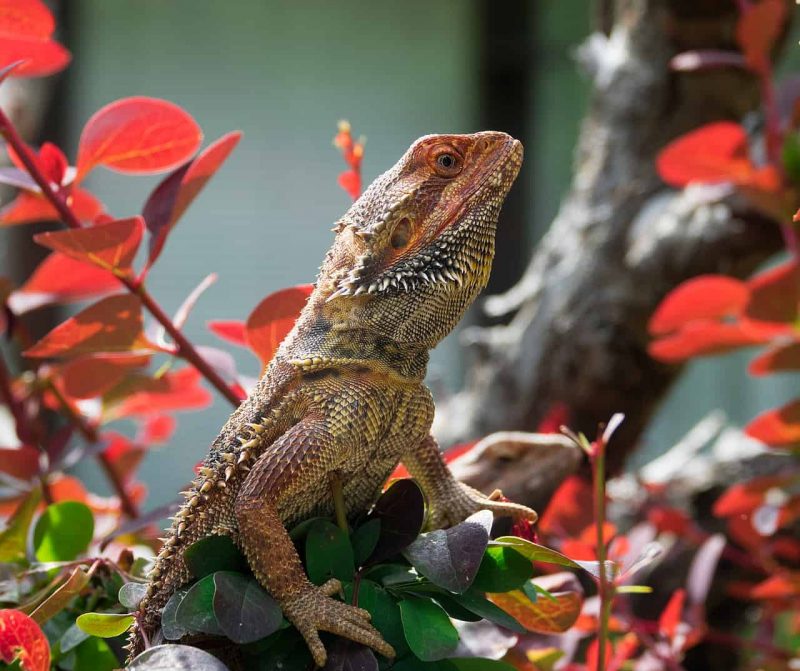


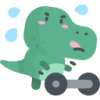

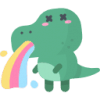
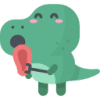

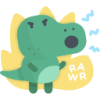


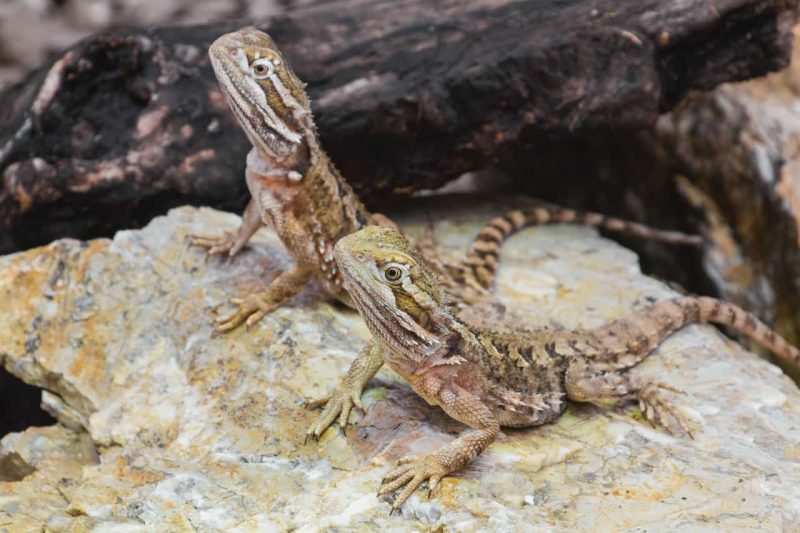
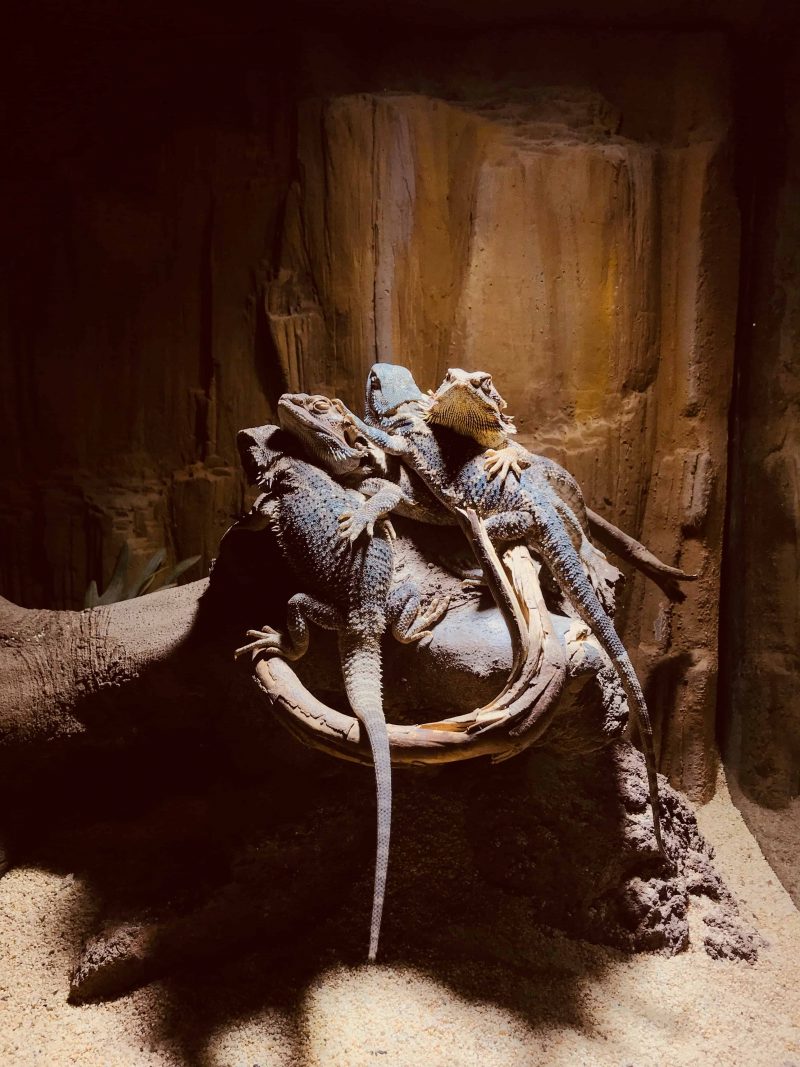
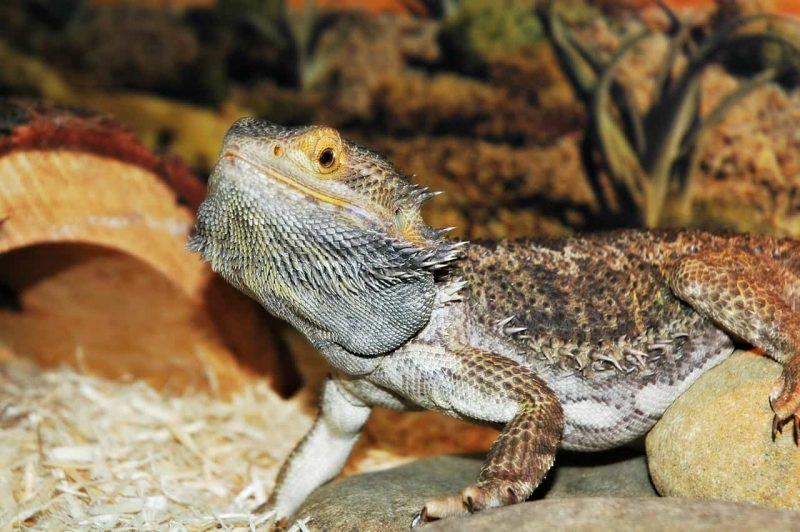
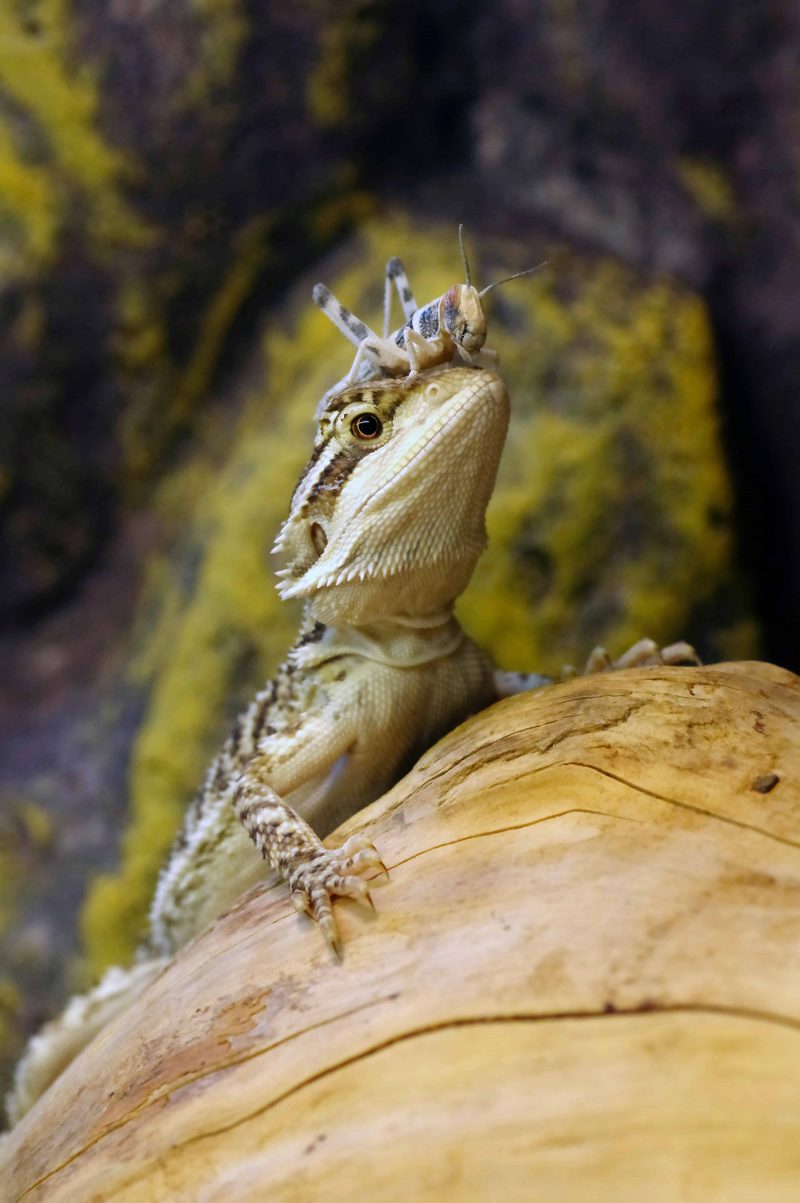
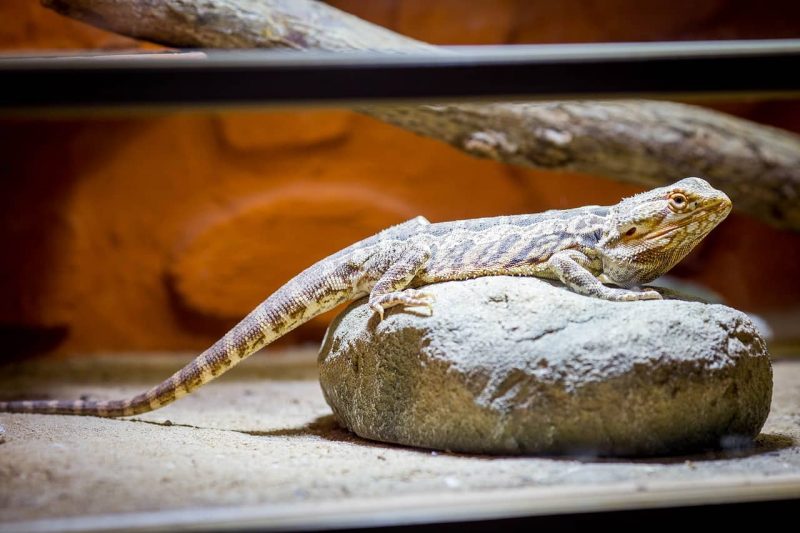
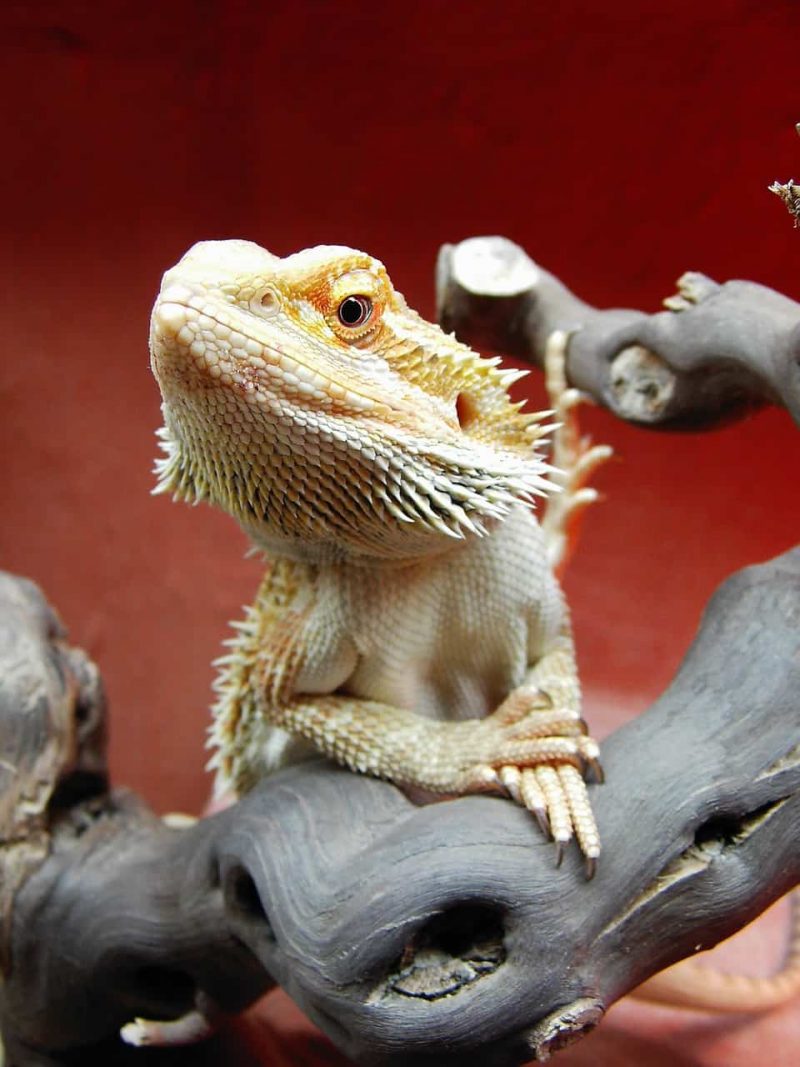

30 Comments
I’m preparing for a beardie and was wondering if you can feed them cucumbers, apples and carrots?
Hi Olivia! Yum – all the veggies and fruits you listed are a good choice for a beardie and combine nicely together. Here are a few notes:
– Fruits, such as apples, should only be given occasionally as a treat or as a topping to increase the attractiveness of a plant-based meal. They are a great vitamin source but don’t overdo it.
– Cucumbers are rich in water but poor in nutrients: they are excellent if you want to rehydrate a beardie and provide a variety, but should never be a plant staple or replace “greens.”
– Finely sliced carrots are an excellent option, rich in Vitamin A. However, they are high in oxalates, so be careful if you provide other oxalate-rich greens like kale and spinach alongside carrots – I would avoid mixing these.
Some leafy greens would be a beneficial addition as well.
This article deals with many common bearded dragon food items in detail – check it out when you can.
Can I feed him sweet potato? He hasn’t eaten for a week so I was getting worried and was not eating the crickets or worms?
Hi Sylvia,
Sweet potatoes (well-cooked or baked) can be given only as a treat once per week, two times at most. A week-long fasting is not overly alarming for adult bearded dragons, but can be critical for juveniles. Check out our separate article on potential reasons for the lack of appetite. Good luck!
how often do you take them to a vet
Hi Destiny,
With reptiles that are obviously healthy and doing well, there’s no need for regular check-ups. However, if you’re really keen on having your beardie checked, a yearly check-up is more than enough.
Hi! Second beardie is only a month old. What live feeders are acceptable for them? I was told we will not know the gender until juvenile age. What are some signs they need to be taken to the vet immediately?
I would appreciate any and all knowledge given, thanks!
Hi Holly!
Beardies are definitely not too picky about their food – I would recommend appropriate-sized mealworms, superworms, dubia roaches, and crickets – never larger than the space between your baby beardie’s eyes.
You are right – it is easiest to tell a bearded dragon’s gender when they reach four to six months.
As for the signs for vet intervention, please watch out for the following signs of illness, and react accordingly. From the top of my mind, respiratory distress, constipation that couldn’t be effectively treated with home remedies, or parasites in the stool would be the definite reasons for a vet check (but please consider others as well).
Good luck!
Hi I just got a breaded dragon\ 3 days ago. He hasn’t ate for 2 days…. Idk how to get him to eat I feel bad but any advice would be very much appreciated and I also can’t tell if he’s nervous or not but he loves being held
Hi Elise,
I believe you have resolved your situation by now – sorry for the late reply.
Lizards are territorial and need some time to adjust to their new setups. Not eating is a common part of the process. How long he can safely be without food depends on his age – adults can stand going hungry for weeks, but with babies, even a week can get them into trouble.
Also, I’d abstain from holding your dragon too much (or at all!) while he’s adjusting.
Hi Im charity I need to know alot about baby beardies cause im gonna get one veryy soon so can you tell me some stuff i need to know
My bestie is almost 3 yrs old. Adopted him from my daughter. She was barely home and handled him minimal. At my home I have a 7 yo. Any how, his neck is always black sometimes darker but always black.
His cage has a heating station 85-100°
I keep the heat lamp on 24/7. water dish and feed him carrots and super worms.
I don’t know what to do
Hey Amie, It’s possible that the black discoloration is related to the heat lamp being on all the time – reptiles can overheat very easily, so make sure your dragon has a cool place to hide if he starts to get too warm. You can also try turning the heat lamp off at night so it can cool down more gradually.
Hope this helps!
So I’m a starter on bearded dragons and I was wondering if bearded dragons need like a hammock or a cave to hide in??,
Hi JJ,
When we keep pets like a bearded dragon, we do the best we can to recreate their natural environment. Your beardie will need somewhere to hide and also somewhere to climb. Please let me know if you have any more questions.
Hey, Michelle.
It’s probably not a problem if your lizard is still young – some young bearded dragons will refuse plant matter until they grow a bit older. Continue offering greens to your pet, and hopefully he or she will start nibbling on them.
However, you can often persuade them to begin nibbling greens by spraying the vegetables with water. Do this when the lizards are thirsty to have the best chance at success. You can also try wiggling the greens a little bit (almost as though they were bugs). Sometimes this helps too.
Best of luck!
Hey, Eve.
I appreciate your passion, but you’re wrong about most of these things.
You can absolutely get juvenile bearded dragons for less than $100 – you just have to know where to look. There’s nothing wrong with basil, though it’s probably not the most cost-effective food for beardies. Silkworms and superworms can serve as a very high-quality component of a bearded’s diet, and I don’t know why you’d think the water content of hornworms would be a problem. Beardeds ingest far more water than that when drinking.
The bearded dragons you see in pet stores are the ones breeders couldn’t sell directly to customers, so yes, they’re typically lower quality than those purchased directly. Glad yours turned out great though!
I appreciate your comments, but we’d recommend being careful where you get your information.
Thanks for reading!
Hello, you made a mistake with the price, juvenile bearded dragons are in the 100’s, same with the adult bearded dragons. Also, bearded dragons can’t eat basil, silkworms are bad for bearded dragons because they contain so much fat, you should only give silkworms to female bearded dragons that are about to lay eggs, and hornworms should only be a treat occasionally because they are high in water content which can easily bloat a bearded dragon. Superworms shouldn’t be given to the bearded dragons too much because they will become bloated. Also, it says that store-bought bearded dragons are bad, I bought two bearded dragons from a store and they were in perfect health and still are, so I recommend you buy from a pet store because they are just as good as ones from breeders because they come from breeders and are brought to the store to be purchased.
What do I do if my beardie is mainly interested in eating super worms and crickets . I’ve tried not feeding him these to concentrate on his greens and veggies but he isn’t interested .
Hey, Cynthia.
It sounds like you’re doing everything fantastically, and that is definitely within the typical size range for a 4-month old bearded dragon. You may even be a tiny bit ahead of the curve in terms of growth.
Keep up the great work!
I ha e a hypo breader dragon sunshine was born April 14 and the lenght of her is 13inches long. Not sure on her weight yet. Is that normal for her age? When i first got her i put her in a 20gallon glass tank she was 2 weeks old. At 2month i put her in a 40 gallon tank. She has been eatting dubia roachers mustard greens, red peppers,collard, okra and crickets when i can’t find roaches.
Hi, Diane.
No. You should turn your bearded dragon’s lights off at night. If you need to use lamps to keep the habitat warm enough (which is usually not necessary), then just use red-colored lights to avoid disrupting your pet’s day-night cycle.
Great question!
Someone asked if you keep the lites on all night. Is that a true fact?
Do you keep the lights on a bearded dragon all night
thank you for all that great info im anew beardie daddy and I found this info priceless thanks&God bless
Hi Kathleen,
Yes, it was a typo (0s were missing). It has been updated, thanks for noticing 🙂
Me acaban de regalar un Dragón barbudo tiene 7 meses .en una hembra comezare mi experiencia de mamá de verdad estoy muy feliz gracias por la explicación
Great info but I think there’s a typo in the temperature section.. it says their cool side of the tank is to be as low as 7 degrees Fahrenheit..